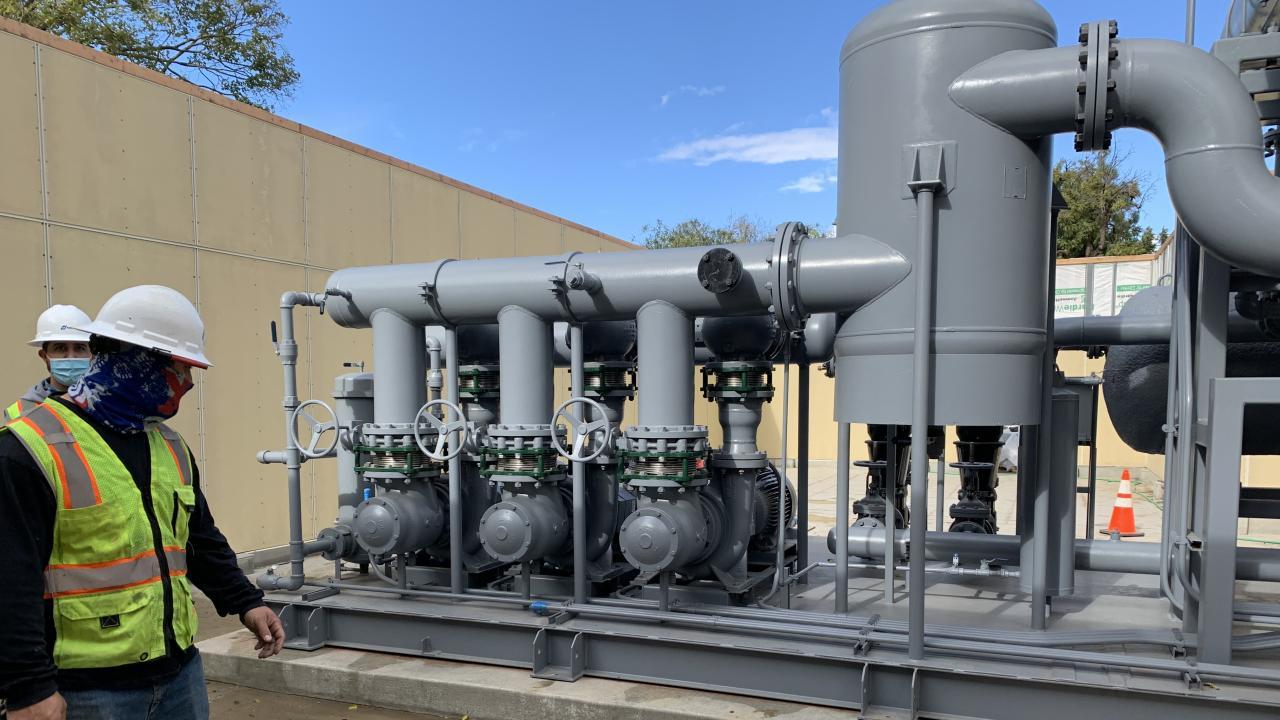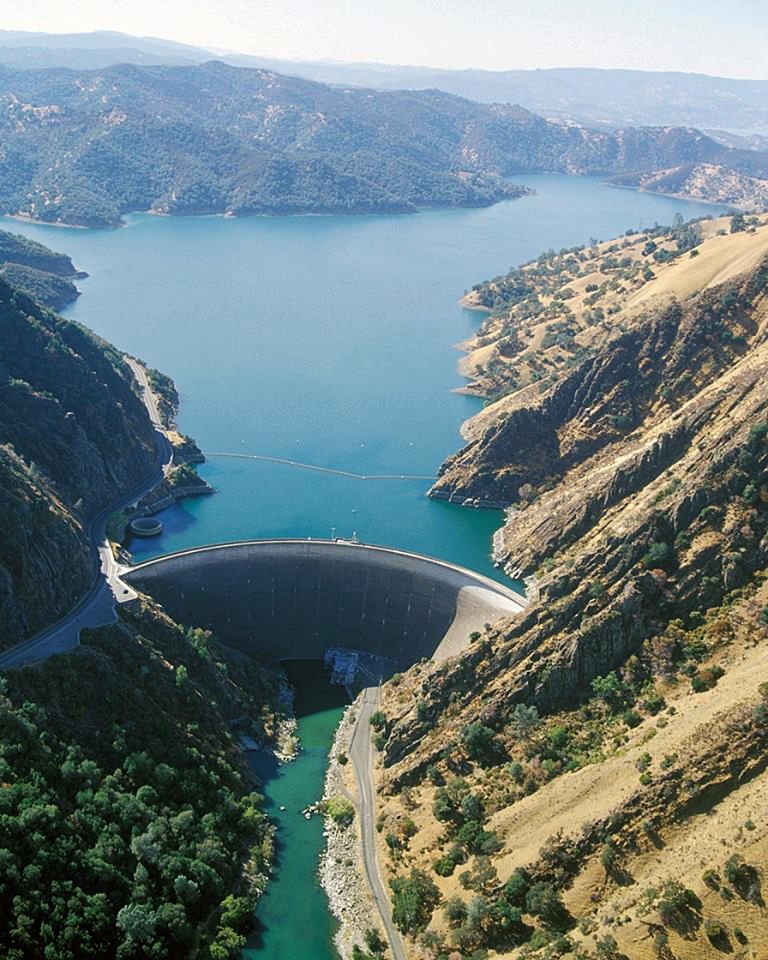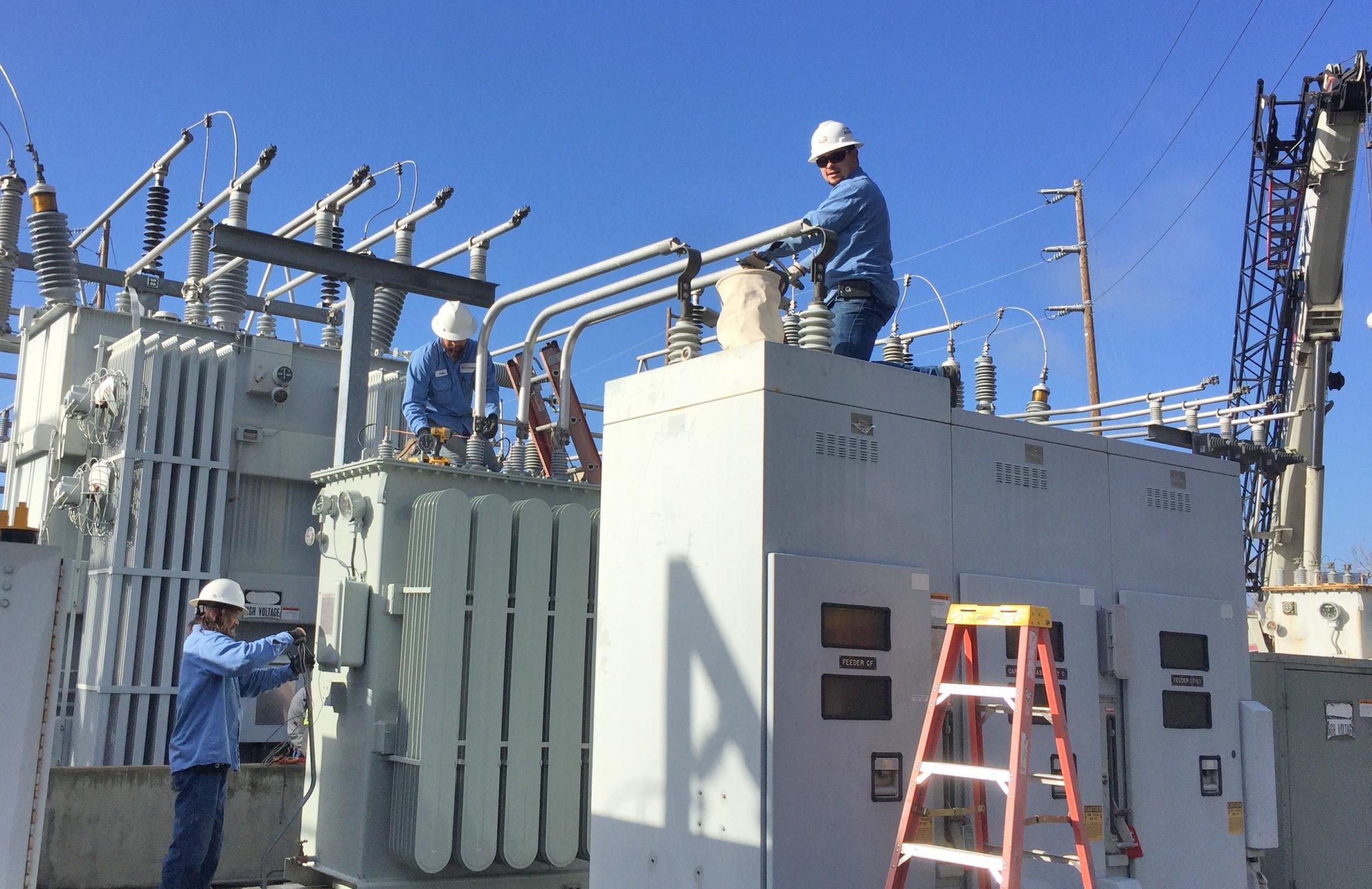
Never Resting on Our Laurels
Three planned projects underscore UC Davis’ sustainability leadership
From researching how to more efficiently cool buildings to adding compost bins to classroom buildings, many units across campus perform invaluable work that allows UC Davis to continuously reach the highest levels of sustainability. Design and Construction Management, or DCM, plays its part in sustainability by facilitating large infrastructure changes in collaboration with other units in Finance, Operations and Administration, or FOA.
“UC Davis is like a city,” said Jim Carroll, associate vice chancellor of DCM and university architect. “We’ve got our own utilities, waste collection and infrastructure supporting the over 60 thousand people that make up the campus community. To grow campus sustainability, we need to build it from the ground up.”
As an extension of his responsibilities at DCM, Carroll joins Camille Kirk — campus sustainability planner and director of UC Davis Sustainability — as co-chair of the recently formed Campus Advisory Committee on Sustainability. Students, academics, staff, and representatives from organizations outside the university – including the city of Davis, Yolo County and the Yocha Dehe tribe – all sit on the committee to advise how the university can communicate about, engage, and advance sustainability. As the committee creates a vision of the university’s sustainable future, DCM will be one of the units responsible for fulfilling it.
“To continue excelling in sustainability, we need to take a holistic and inclusive approach throughout the university and beyond,” Kirk said. “The committee brings together a lot of different thinkers and working professionals with different areas of expertise to advise on sustainability efforts at the highest level.”
Kirk and Carroll lead the diverse committee members as they pursue a variety of goals including advising on the creation of Fossil Fuel-Free Pathway Plan; incorporating diversity, equity, inclusion and climate justice in sustainability planning; and encouraging campus community members to take productive action on sustainability issues.
DCM is working with their peers in Facilities Management on the planning stage for major infrastructure projects meant to address some of these goals, specifically improving drought resiliency and reducing the use fossil fuels on campus.
Striving for better water sources in drought
To keep campus landscapes and the people who enjoy them happy and hydrated, the university needs water. Efforts to manage campus water usage sustainably through efficiency and conservation have been very effective, but as the region continues to contend with droughts the university also must manage where it gets its water.

UC Davis currently utilizes three main water sources. The university has an annual allotment of water from Lake Berryessa, which is primarily used for field irrigation and aquaculture research. Groundwater from aquifers beneath campus is used for some field irrigation, landscape irrigation, and as the main source for domestic water, which includes drinking water. UC Davis also has access to water from the Sacramento River, which supplements the domestic water supply.
“Climate science suggests that with climate change Lake Berryessa will be a more reliable water source in the long term than the Sacramento River,” Kirk said. “It’s been our ultimate goal to use it to make our domestic water supply more resilient and improve our groundwater sustainability.”
To this end, a water treatment plant bringing Lake Berryessa water quality up to domestic water standards is planned on west campus. Once a new treatment plant is constructed, reliable, high-quality surface water not needed for agriculture will be reallocated to domestic water. This shift will also alleviate pressure from aquifers, improving their longevity.
“This is a good planning move to future-proof our water supply and improve its resiliency,” said Joshua Morejohn, executive director of Engineering and Utilities Operations at Facilities Management.
DCM and Facilities Management are currently in the preliminary planning stages for this project with final design and construction to follow pending campus approval.
Shifting from fossil-fuel-powered steam to hot water
Another major infrastructure project that will progress campus sustainability is already well underway. The Big Shift is a multi-year project to revolutionize campus heating.
“The Big Shift is all about shifting away from steam to hot water heating to ultimately reduce our reliance on fossil fuels,” said Dan Golde, associate director of engineering at DCM and project manager for the Big Shift.
For decades, campus buildings have been heated by steam, which is generated in the Central Heating and Cooling Plant then sent to buildings. Producing steam using the with our central plant boilers requires the combustion of fossil fuels. That won’t be the case with hot water, which can be heated with electricity from renewable energy sources, once all the infrastructure is in place. That infrastructure includes laying new hot water pipes throughout campus and converting the mechanical rooms of each building on the central heating system to utilize hot water in lieu of steam. And, ultimately, plans call for installing a ground-source heating loop to allow campus to fully shift away from boilers. Until all of this infrastructure is complete, steam will continue to be produced at the central plant to heat the non-converted buildings and will also be used to heat hot water for the converted buildings. This massive undertaking will be executed incrementally, with the conversion of areas of campus aligned with the steam system age and remaining life cycle capability.

“From conception, we knew the Big Shift would be a long process – it requires our ongoing commitment to invest in this new infrastructure and manage through the construction disruptions. Our patience and persistence win the race, though, because the Big Shift is an enormous part of reducing fossil fuel use and improving the resiliency of our heating system,” Kirk said.
This first segment of the Big Shift, which focused on the “Quad district,” was completed this summer. Over four miles of new hot water pipes were laid and almost 30 buildings are now being heated with hot water instead of steam. This is a major step forward for the campus, but the next step is even more exciting. The Big Shift continues in the western campus core, adding more pipes and converting more buildings. Most significantly, it will include the installation of new heat-recovery water chillers and a thermal energy storage tank for the hot water system.
“Heat recovery chillers are really the next big step forward for efficiency and fossil fuel reduction for our heating system,” Morejohn said.
Heat recovery chillers capture energy that is released as heat when water is chilled for the campus cooling system. With the current cooling system, this heat is lost or “rejected” to the atmosphere. With heat recovery chillers, this energy can be used to heat water to supply the buildings that have already been converted, without relying on steam or any other fossil fuel-dependent process. According to Morejohn, the heat recovery chillers and thermal energy storage tank will be able to provide up to 60% of the annual heating load for the converted buildings.
Switching to supports more electrification
As the campus continues to make strides toward reducing fossil fuel usage, reliance on electricity as an alternate energy source will increase.
“Electrification is a key part of our plan to eliminate our reliance on fossil fuels,” Kirk said. “We have to ensure our electrical and high voltage systems will be able to reliably handle the increased demand.”

That’s where the third major infrastructure project comes in. A new electric switch station will improve the resiliency of the university’s electrical grid in preparation for these changes.
“This switch station is the last piece in our campuswide electrical plan to increase power grid redundancy and reliability,” Morejohn said.
“Campus heating is going electric, but it’s not the only thing,” said Jason Magness, executive director of engineering and campus engineer at DCM. “We’re working toward electrifying the campus fleet including Unitrans, as well as swapping out many pieces of process equipment that typically use steam such as laboratory autoclaves.”
In anticipation of the increased electrification, the switch station will not only diversify the grid on campus, but also allow unplanned power outages to be addressed more quickly and ultimately automatically.
Sketching out the future
“Our vision is to continue innovating, and serving as an example for how other universities, large-scale institutions and cities can evolve sustainably,” says Clare Shinnerl, vice chancellor, UC Davis Finance, Operations and Administration. “While these efforts rely on funding from the University of California and the state, we will continue planning for and implementing solutions that keep us prepared for the future.”
Join the discussion by attending one of the upcoming Campus Advisory Committee on Sustainability Town Halls on November 17 and November 18. Please register ahead of time on the Sustainability website. The open, virtual meetings will share findings from the draft Fossil Fuel-Free Pathway Plan, and offer opportunities for the campus community to provide feedback.
